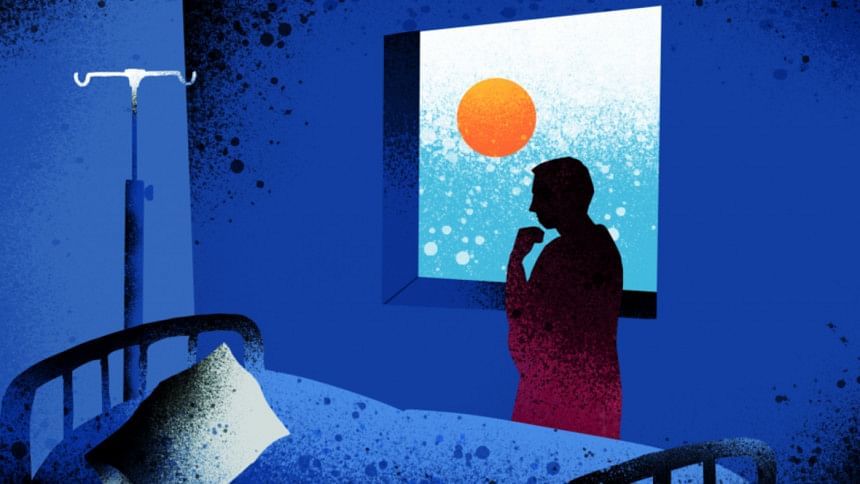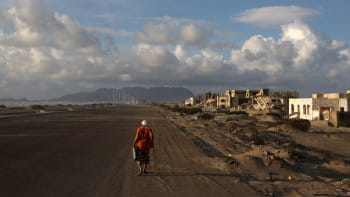Home isolation in the complex context of Bangladesh

The number of COVID-19 patients in Bangladesh continues to increase every day. The vast majority (approximately 80 percent) of COVID-19 patients will develop mild symptoms including fever, cough and sore throat. Most countries are advising COVID-19 patients with milder symptoms to stay home and self-isolate themselves. This is a pragmatic decision to reduce the anticipated surge in healthcare use, more so for low- and middle-income countries. However, even people with milder symptoms will have to be cared for, especially when the patient is a child or an elderly household member.
Home caring for patients with infectious disease, can be a complex issue within the cultural context of Bangladesh. The prevalent social norms are when someone becomes ill, family members provide close "physical and emotional" care which expose them to patient's oral and nasal secretions. It is also common to share the same bed with the sick individual. Such practices are exceptionally challenging to address when trying to contain household transmission of disease like COVID-19 which is predominantly spread through respiratory droplets and contact. There is no easy solution.
The first big question is "how and where to isolate a COVID-19 patient within the household?"The WHO suggests possible COVID-19 patient should be placed in a separate well-ventilated room. This is a luxury for many households in Bangladesh. Most households have five or more family members and many houses have only one shared sleeping area. When there is no separate room, the patient can be placed in one corner of the house maintaining at least one metre distance from other household members.
Patient should restrict movement within the household and avoid all contacts, especially with infants, elderly or other family members with underlying chronic conditions such as heart and lung diseases. Windows of the house should be kept open to ensure ventilation. A medical/surgical mask (not cloth mask), when available, should be worn by the patient and changed every day. The mask should be disposed off safely in a closed bin or bag. If masks are not available, coughing on bent elbows and using a tissue or a cloth piece to blow noses will limit exposure to infected respiratory droplet. The tissue or cloth must be disposed off immediately.
Second question, "who cares for the COVID-19 patient?" Caring for COVID-19 patient, whenever possible, should be done by specific family member, preferably someone in good health without underlying chronic conditions. If any household member has recently recovered from COVID-19 he or she can also provide care. The carer has to wash hands with soap and water after every contact with the patient. Hands should be washed for at least 20 seconds or in such a way that both the surfaces of the hands including the fingers, the finger gaps and the nail beds including the tip of the fingers are thoroughly cleaned.
Caregivers can also keep their faces turned away from the patients' face when feeding them. When the caregiver has to sleep next to the patient, maintaining a distance of at least one metre and avoiding sleeping face-to-face can reduce the risk of exposure to contaminated respiratory secretion.
Third question, "how to maintain cleanliness within the household?" Avoid contact with contaminated items from the patient including toothbrush, utensils, towels, leftover food, drinks, bed linen and wash clothes. Patients' clothes should be washed separately with household detergent and dried under the sun.
It is advisable to disinfect toilets after being used by COVID-19 patients. Most households will have one toilet for the whole family. Additionally, in some settings, households clustered within the same compound will have family members from multiple households sharing single toilet. Regular cleaning of shared toilets is challenging, but doable.
Low cost soapy water prepared by mixing 30 grams of regular detergent with 1.5 litres of water can be stored in disposable water bottles and used as a disinfectant to clean toilets in shared points. In households using mounted toilets, the toilet lid should be put down after use to avoid generation of faecal droplets through flushing. Regular cleaning of household surfaces (including doorknobs) is also important to prevent household transmission. Soapy water can be used to clean household surfaces and hands as well.
COVID-19 patients should be closely monitored for worsening symptoms such as difficulty in breathing and should be shifted to hospital immediately. All household members will subsequently need to quarantine themselves from the time the patient has been confirmed for COVID-19 till 14 days after the patient has recovered.
Caring practices that are embedded within the cultural context of the country are hard to modify. However, during moment of crisis, the human brain can adapt quickly. The government should continue to engage heavily in evidence-based risk communication with the community so that people can trust public health authorities and make decisions based on science.
Dr Nusrat Homaira, MBBS, MPH, PhD is a respiratory epidemiologist and senior lecturer with the University of New South Wales, Sydney, Australia. Saiful Islam is a social scientist and a PhD researcher at the University of New South Wales, Sydney, Australia. Dr Zakiul Hassan is an Infectious Disease Researcher at International Centre for Diarrhoeal Disease Research, Bangladesh (icddr,b).

 For all latest news, follow The Daily Star's Google News channel.
For all latest news, follow The Daily Star's Google News channel. 



Comments